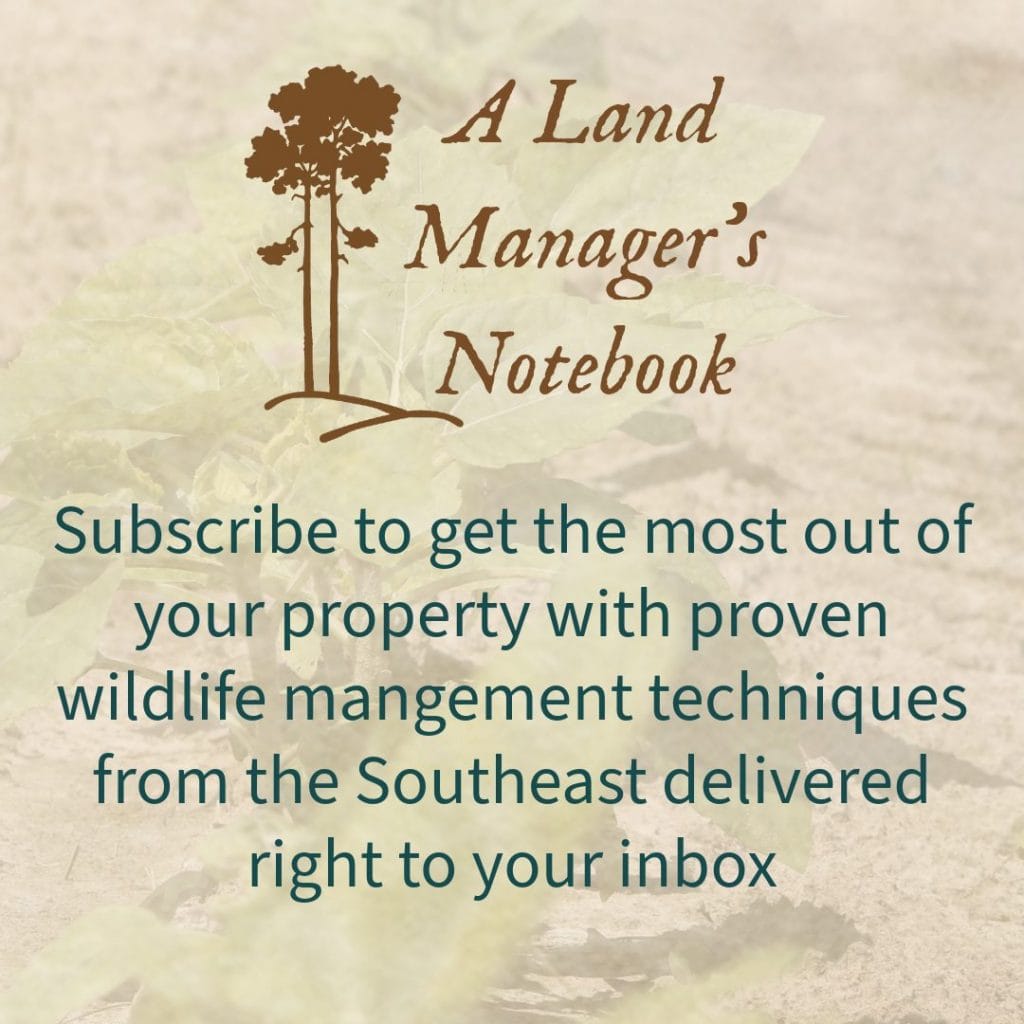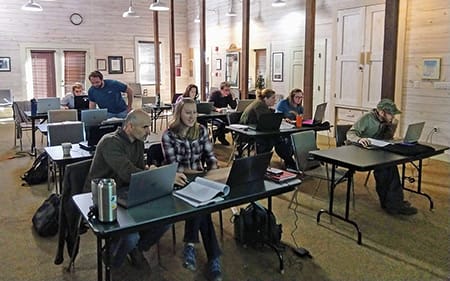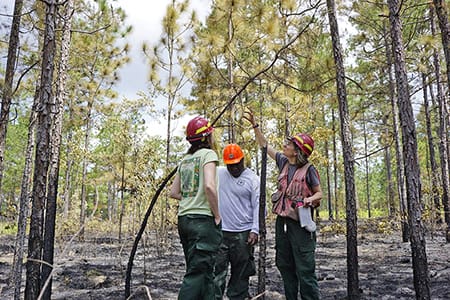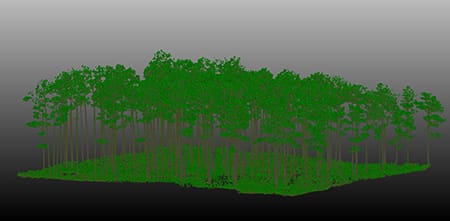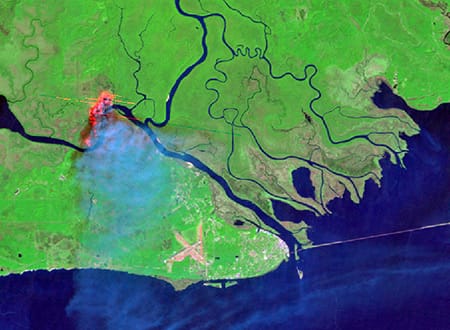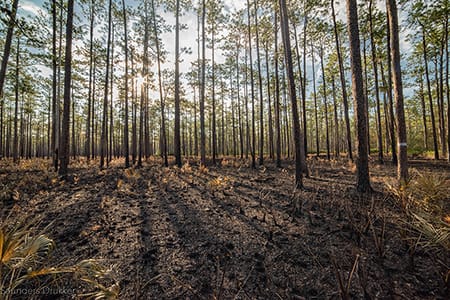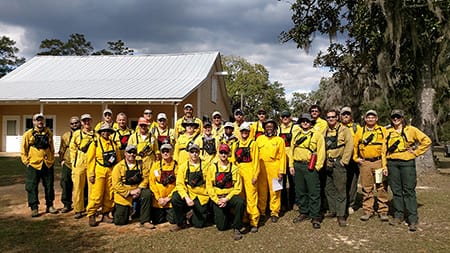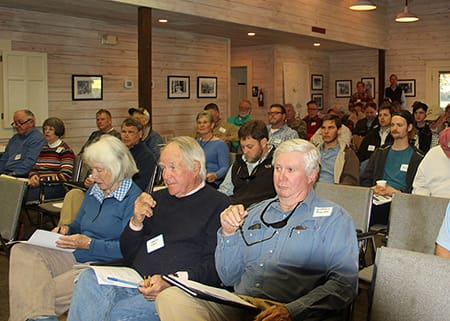In recent years, severe storms have become increasingly more common. In the last two years alone, the heart of South Georgia and North Florida quail country has been impacted by three major hurricanes and numerous tornadoes.
These storms have left many landowners with devastating damage and many questions about how to clean up their property or help prevent the loss of trees.
The 2025 Atlantic Hurricane season is upon us, starting on June 1 and lasting through November 30, and forecasters with the University of Colorado are predicting an above average year in the tropics. In all, 17 named storms – 9 of them hurricanes and four of those being major storms – are forecast.
Hurricanes play a role in the ecosystem just as fire and rainfall.
They shake loose decaying limbs, helping to thin out the overstory and can create ground disturbances that can eventually be beneficial.
But major storms can also level trees which, in turn, become a tinderbox that increases the risk for more severe wildfires, and can cut into efforts to grow merchantable timber.
Three hurricanes during the 2024 season and numerous tornadoes left many Red Hills properties with thousands of downed trees that posed a financial burden in clean up, loss of huntable habitat and in some cases, stalling or halting silvicultural efforts.
Research involving Tall Timbers’ Research Ecologist Seth Bigelow assessed how a range of wind speeds and management strategies affected the probability of tree damage following 2018’s Hurricane Michael.
Read more: Study: Thinning your pines can help your stand weather a hurricane
Researchers found two results that were to be expected and had little to do with management practices:
The probability of damage in pine stands increased dramatically when maximum sustained wind speed exceeded 79 mph and also when there was little forest cover upwind to act as a buffer.
Researchers emphasized however that a third finding – the probability that damage increased for trees that were taller than average or which had low taper – merits special attention because it can be influenced by management.
Taper is measured by breast-height diameter divided by total tree height. Researchers found a ratio of 0.15 inches or more of breast-height diameter per foot of tree height appeared to offer substantial protection against wind damage.
Applying this research to management comes down to allowing more room for trees to grow by thinning to reduce crowding and encourage development of tapper.
The researchers found that tall stands with an average height of 60 feet were much more likely to have trees with low taper than shorter stands, an average height of 40 feet.
This suggests the importance of being vigilant about thinning as planted stands develop.
Although remaining trees can be slightly more vulnerable to windthrow for several years after thinning, such vulnerability can be minimized by maintaining an open stand with space between adjacent tree crowns so that all trees acquire some level of resistance to windthrow.
This kind of structure has the added benefit of fostering growth and diversity of the understory plant community and supporting the spectacular wildlife community that depends on it.
Read more: Are hurricanes a growing threat to longleaf and other rare species?
A hurricane downed my trees. Now what?
When trees do come down, there are important steps to address in a timely manner to clean up debris and attempt to salvage any potential income from a timber sale.
Interviews by Tall Timbers Conservation Stewardship Coordinator Josh Webb with landowners, managers and foresters from across the Red Hills revealed different strategies with dealing with storm damage and some things landowners need to consider.
One option is to do nothing. Hurricanes and tornadoes are natural and the disturbance they create can create valuable habitat for many species. Course woody debris is often limited on the landscape. Species such as eastern box turtle, various snakes, and amphibians utilize downed trees for refuge.
Doing nothing is typically not an option for most landowners, especially in quail country. Landowners have spent a lot of time and money managing their upland forests and groundcover to promote quail. Downed trees can create obstructions for hunters as they course through the woods in the fall. In addition, the holes created from upturned root balls can be hazardous for horses, wagons, and the heavy equipment used to manage the property.
Clean up operations can be extremely costly. The equipment needed to complete the job is expensive to operate.
One way to offset costs is to conduct a salvage timber harvest. Downed timber from storm damage is typically worth 30-40% of the normal fair market value of standing timber.
Salvage timber operations typically involves mechanized logging crews picking up the merchantable wood and a clean up crew piling and burning the remaining debris. Most landowners elected to cut the tops and root ball off at the site of the blow down and the main stem is then skidded to a loading ramp and processed the same as a normal logging operation. An excavator or front-end loader is used to remove as much dirt as possible from the root ball either before or after the root ball is cut from the main stem and the hole is then filled in. A loader then piles the root balls and tops in small piles throughout the property that are later burned.
On some properties, the entire tree was skidded to a ramp where the root balls and tops were removed. This method consolidated the unmerchantable debris making clean up easier. An excavator worked ahead of the logging crew to repair the root ball holes before the trees were taken to the ramp. Fewer trees can be skidded at a time as compared to when the tops and root ball is removed. This method seemed efficient but resulted in the most significant damage to the groundcover.
A common theme was the importance of lining up logging and cleanup crews early, ideally before the storm arrives.
There is a limited amount of time that trees can be salvaged. Downed timber is susceptible to blue stain fungus which makes the timber unmerchantable for most mills. The amount of time timber can be on the ground varies based on the time of the year and weather conditions but its typically 3 to 4 months before it becomes unsalvageable. There are often a limited number of crews available so work with your forester closely to schedule crews quickly.
You may have heard of blue stained pine timber being made into flooring and wall siding. These are typically made by specialty mills that typically only take limited quantities and are selective of the quality timber they buy. These mills are not suited to handle the volume associated with storm wood.
There are some negative consequences with conducting timber salvage operations that landowners should consider. For those landowners who manage their property for quail hunting, salvaging timber can be extremely destructive to the groundcover, as previously mentioned. Downed trees are typically scattered which makes in difficult to skid them to loading ramps without disturbing a large portion of the groundcover.
However, just because a salvage operation takes place, does not mean that area will suddenly become void of quail. Many managers will adjust their strategy when putting in hunt lanes. Under normal circumstances, quail properties remove 25-30% of the cover when installing hunt rows. Salvage operations may knock down similar amounts of cover to where the amount of mowing or roller chopping can be reduced.
This is also the reason some landowners elect to not conduct clean-up operations until after quail season, forgoing the opportunity to sell the wood. The downed trees may cause inconvenient obstacles for the hunting party but this strategy causes the least amount of damage to the cover.
Most landowners, choose to conduct clean-up operations before the hunting season.
Some may deem a salvage operation is not justifiable because of the limited amount of volume and elect to contract crews to clean up the damage. In this situation, trees are piled and burned on site before the hunting season.
This strategy involves an excavator or front-end loader being used to remove dirt from the root ball and fill in the holes created from the uprooted trees. A cut down machine aka “feller buncher” cuts the tree into sections. A loader then piles the trees in small piles throughout the property. The piles are later burned.
Some landowners even elected to utilize a forestry mulcher and grind the tops and root balls further decreasing the amount of damage to the cover. This strategy creates significantly less damage to the cover as compared to conducting a salvage cut and other traditional clean-up methods. Forestry mulchers are extremely efficient at processing the large limbs and root balls. Typically, only taking a few minutes per tree which can help expedite clean-up efforts. For landowners who generate income from selling quail hunts, this may be the preferred option.
Its difficult to quantify how much a clean up operation after a storm costs as that depends on the volume of wood on the ground. Hopefully this article will give you some things to consider as you plan for the next storm.
Approximate rates in 2025 for the equipment needed to conduct clean up operations are below. The cost of the equipment used in a salvage timber harvest is absorbed in the sale of the timber.
- Excavator: $200-$275/hr
- Front end Loader: $135-$150/hr
- Cutdown aka “Feller Buncher”: $200-$225/hr
- Forestry Mulcher: $300/hr



